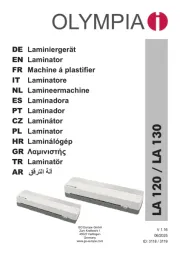Olympia PA 150 Manual
Olympia
Ikke kategoriseret
PA 150
| Mærke: | Olympia |
| Kategori: | Ikke kategoriseret |
| Model: | PA 150 |
| Bredde: | 60 mm |
| Dybde: | 38 mm |
| Højde: | 15 mm |
| Vægt: | 25 g |
| Produktfarve: | Rød |
| Alarm decibel: | 100 dB |
| Tilkoblingstype: | Træk |
Har du brug for hjælp?
Hvis du har brug for hjælp til Olympia PA 150 stil et spørgsmål nedenfor, og andre brugere vil svare dig
Ikke kategoriseret Olympia Manualer

8 Oktober 2025

12 Januar 2025

16 August 2024

12 August 2024

10 August 2024

10 August 2024

10 August 2024

9 August 2024

9 August 2024

8 August 2024
Ikke kategoriseret Manualer
- PNI
- Code
- Vivotek
- Mermade Hair
- Tenderfoot Electronics
- Yamazen
- Zepter
- Simeo
- AutoParkTime
- MIDI Solutions
- Artrom
- Binatone
- Audibax
- Algo
- Western Co.
Nyeste Ikke kategoriseret Manualer

28 November 2025

28 November 2025

28 November 2025

28 November 2025

28 November 2025

28 November 2025

28 November 2025

28 November 2025

28 November 2025

28 November 2025
